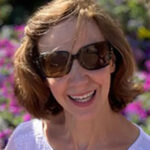From space to the boardroom
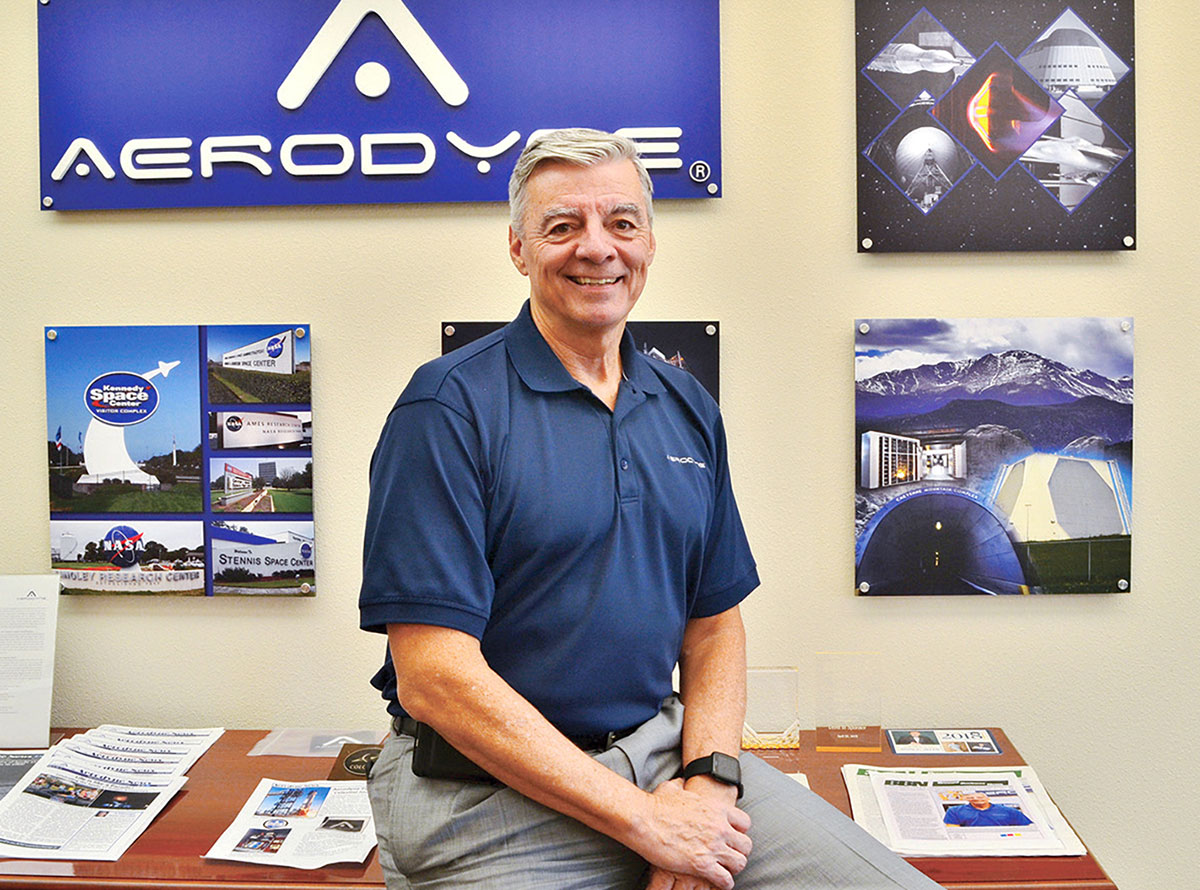
Andy Allen, who piloted fighter jets as well as space shuttles Atlantis and Columbia, now captains Cape Canaveral-based Aerodyne Industries. AERODYNE INDUSTRIES
Aerodyne CEO has logged a multitude of career launches over time
For Andy Allen, a visit to the space shuttle Atlantis at the Kennedy Space Center Visitors Complex is a visit to an old friend, for he is very familiar with the venerable spacecraft. He should be. He piloted Atlantis in 1992.
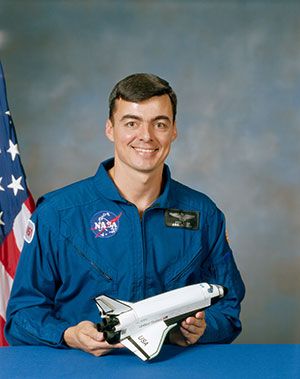
The Aerodyne Industries CEO was part of NASA’s Astronaut Class of 1987. Allen piloted several space shuttle missions in the 1990s. NASA
Test pilot, Top Gun, Marine Corps lieutenant colonel and now CEO of Cape Canaveral-based Aerodyne Industries, Allen also piloted Columbia in 1994 and was its mission commander in 1996. He has logged more than 900 hours in space. His time as a test pilot and Top Gun fighter pilot in more than 30 different aircraft puts his total flight hours at 6,000.
These days, Allen has exchanged the test jets and the spacecraft for an Embraer Phenom 100 twin-engine jet that can effortlessly connect the Merritt Island resident with Aerodyne offices around the country.
“I can go to DC for a couple of meetings in the morning and head to Huntsville, Alabama, in the afternoon and be home in the evening,” he said.
Lessons learned flying experimental aircraft have served Allen well as he guides Aerodyne.
“It taught me to look for opportunities and accept risk in a smart way, not a cavalier way,” he said. “I think this attitude really helps in the business world.”
Aerodyne has certainly successfully embraced opportunities. The company was named to the Inc. magazine’s 5000 Fastest Growing Companies list in 2019 and 2020 and placed 79th on the Inc. 5000 regional list of fastest-growing private companies in Florida for 2021.
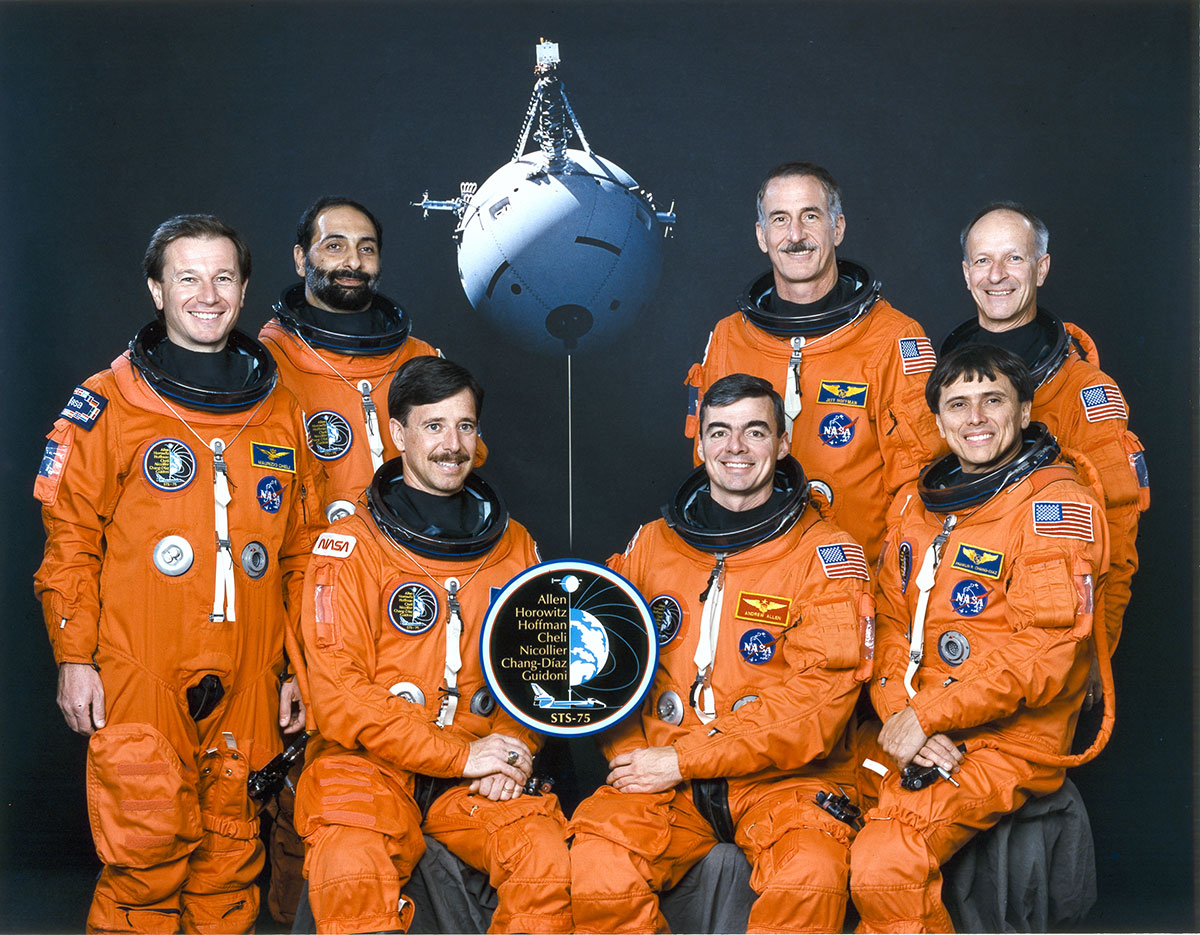
The crew of STS-75 included Commander Andrew “Andy” Allen, pilot Scott Horowitz, mission specialists Jeffrey Hoffman, Maurizio Cheli, Claude Nicollier and Franklin Chang-Diaz and payload specialist Umberto Guidoni. NASA
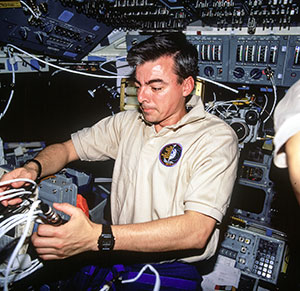
In 1996, Allen was the commander of STS-75, the 19th mission of space shuttle Columbia. It was his third, and final, flight into space. NASA
JOINS NASA LEADERSHIP
After retiring from the military and his job as an astronaut, Allen continued with NASA in leadership positions at Kennedy Space Center, Johnson Space Center and NASA headquarters. He spent seven years at KSC working for NASA and United Space Alliance, overseeing launch operations and maintenance and operational support to ground infrastructure. Allen’s team was responsible for United Space Alliance’s return-to-flight effort after the Columbia disaster in 2003, which required the recovery, identification and subsequent modification of critical shuttle components and related systems prior to the launch of Discovery 30 months later.
Those were dark days for Allen, who had flown in Columbia twice. He had been standing with Columbia family members waiting for the spaceship to return when it never did.
“From an astronaut’s perspective, we accept the risk because of the contribution we are making, but it was hard, because you knew the astronauts, you knew the families,” he said.

Aerodyne was well represented at the Artemis Wet Dress Rehearsal March 17, 2022. From left are Andy and Brenda Allen, Tori Upton, and Charlotte and Ralph Rohloff. AERODYNE INDUSTRIES
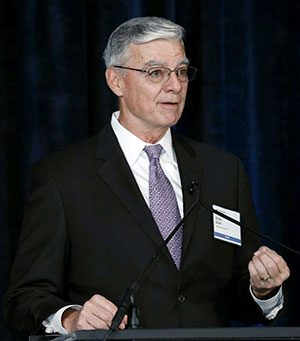
Allen was named an EY Entrepreneur of the Year in Miami in 2022. The award is sponsored by Ernst and Young to recognize entrepreneurs. AERODYNE INDUSTRIES
DECIDES TO GO SOLO
Allen later joined Honeywell as vice president of Space Programs and Requirements. When the company proposed a relocation to Phoenix in 2006, he decided it was time to go out on his own.
“I felt it was time for me to try to run my own business and I felt that if I didn’t do it then, I would never do it at all,” he said.
“I was thinking about starting a company and Dad said ‘why don’t you take Aerodyne?’ ”
Allen’s father, Charles Allen, chartered Aerodyne in 1968, the year he retired from a naval career that included flying a torpedo bomber during the Battle of Okinawa in World War II.
“With five kids on a Navy officer’s pension, he needed the money,” Allen said.
His father’s Aerodyne was a very different animal from the company Allen pilots today. In addition to a full plate as a flight instructor during the day and ground instructor at night, under the Aerodyne name Charles Allen manufactured instrument panels for WACO aircraft and ran a franchise of Velvetex, a painting system used in restaurants and automobiles.
“He was basically a one-man shop,” the younger Allen said.
With Andy Allen at the helm, Aerodyne transitioned to providing complex solutions and information technology for NASA, the Missile Defense Agency, the National Oceanic and Atmospheric Administration, the U.S. Department of Defense and the U.S. Department of State.
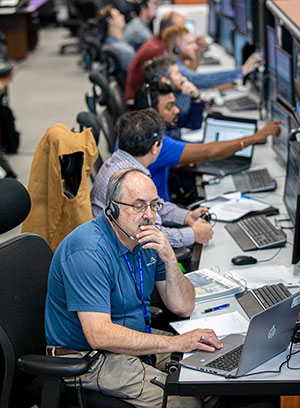
Aerodyne’s John McClelland participates in an Artemis I launch countdown simulation inside the Rocco A. Petrone Launch Control Center Firing Room 1. AERODYNE INDUSTRIES
ASSEMBLES AMAZING TEAM
Allen, who knew battles are won not in the generals’ boardrooms but in the fox holes, assembled a seasoned workforce of engineers, IT technical experts and project managers with a history of providing exceptional support across most of the NASA centers. This allowed the company to maintain a strong presence not just at Kennedy Space Center, but also at Johnson Space Center, Ames Research Center, NASA Jet Propulsion Laboratory, Stennis Space Flight Center, Goddard Space Flight Center, Marshall Space Flight Center and Glenn Research Center.
“No matter what they are doing, they really, really care about their jobs,” he said.
Every one of the 650-person team at Aerodyne happily does his or her part, which these days includes a key role in the successful mission of Artemis I, the first in a series of increasingly complex missions that will enable human exploration to the moon and Mars.
Team members such as John McClelland support Firing Room 1 console operations for launch. Employees have also supported development of the Launch Vehicle Stage Adapter, the cone-shaped piece that connects the rocket’s core stage and interim cryogenic propulsion stage.
Aerodyne team members also support the Mission Control Center at Johnson Space Center. When the twin solid rocket boosters on the Space Launch System rocket ignite for the Artemis I mission, the flight control team in Mission Control Center at NASA’s Johnson Space Center in Houston are responsible for the flight. After launch controllers at Kennedy Space Center in Florida conduct the countdown leading to Orion’s launch atop the SLS rocket, mission control takes over the Artemis I flight through Orion’s splashdown.
“The successful launch of Artemis I on Nov. 16, 2022, was the culmination of a tremendous amount of work by an amazing team,” said McClelland, engine avionics console system specialist for Artemis I.
Aerodyne staff members are grateful for Allen’s leadership.
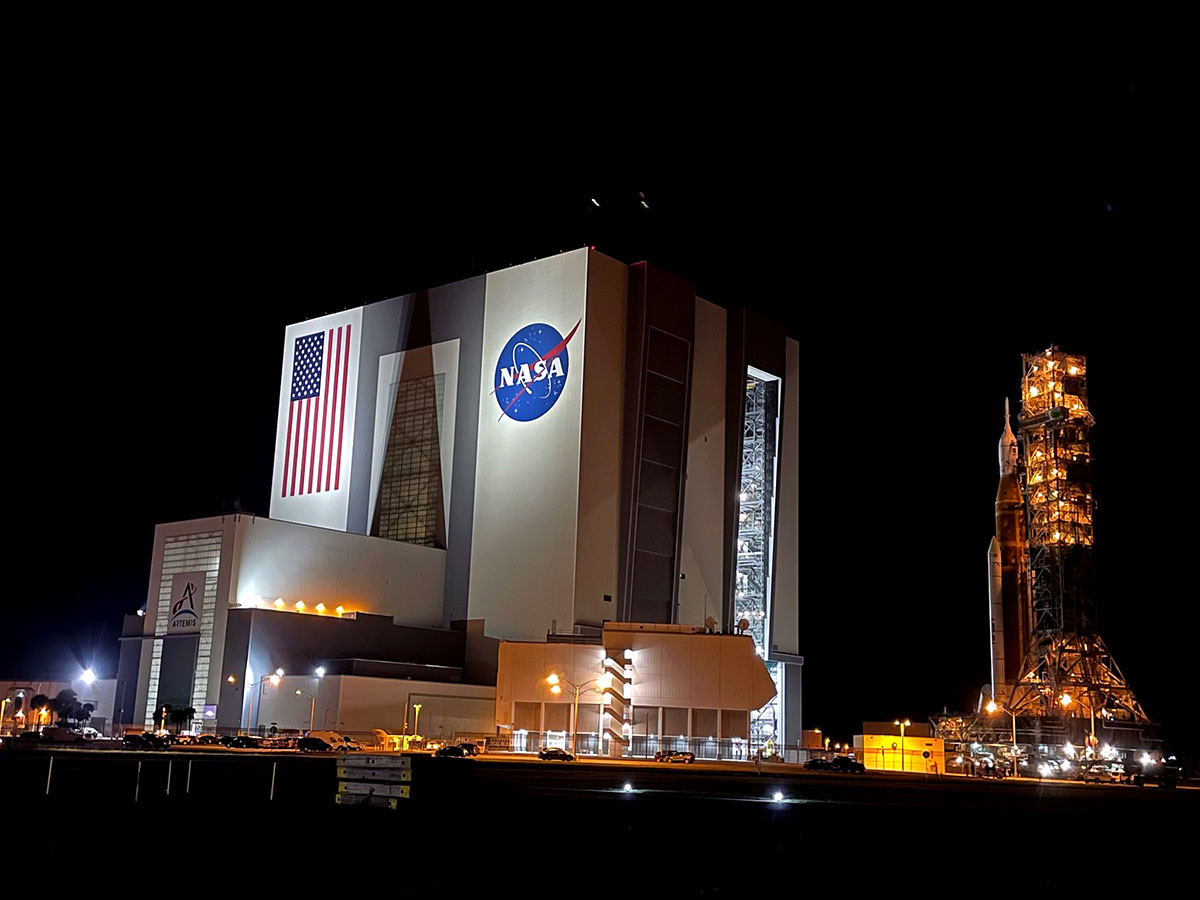
Aerodyne has a key role in Artemis I project, the first in a series of increasingly complex missions that will enable human exploration to the moon and Mars. NASA
“The management teams and their culture of caring makes it a very enjoyable and pleasant organization to be a part of,” said Chuck Rake, manager for the Flight Electrical and Pyrotechnics group on the Artemis program.
Ellen Brown, program support management for the Test and Operations Support Contract, agrees.
“Our company’s strength comes from how leadership comes together and how we excel at our work,” she said.
John Janokaitis, who has a 43-year career at Kennedy Space Center, has been with Aerodyne since 2013.
“CEO Andy Allen and COO Lee Williams established a culture of caring,” he said.
“They truly care about the well-being of every employee. When you feel respected like that, you want to do everything in your power to ensure the company succeeds.”
